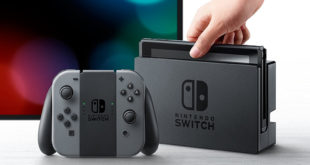IHS Markit has forecasted the Nintendo Switch will sell 4.4m units by the end of 2017, with the vast majority of buyers being either existing Nintendo console or handheld owners or general early adopters.
That’s a slightly more conservative estimate compared to SuperData’s earlier report, which stated the research firm expected the Switch to sell 5m units by the end of the year. As for lifetime sales, IHS says it expects the console to sell "significantly more" than the Wii U and that it will also surpass the GameCube and Nintendo 64, but won’t quite hit the same level of success as the 3DS due to its higher price.
"There is no doubt that Switch is better positioned with solid chunks of the traditional console audience than its predecessor the Wii U so should start more strongly as a result," said IHS’ director of media and telecom Piers Harding-Rolls.
"Convincing this early adopting audience of the merits of a new platform is a building block of delivering sales momentum, so should not be underestimated in value, but it is possible that this phase of buying will be relatively short lived. After all, many day one purchasers will already have invested in a PlayStation 4 or Xbox One, or indeed own the latest Nintendo handheld consoles. The price point of the Switch at $300/280 plus content and peripheral costs is high enough to impinge on the buying activity of this early adopter audience, reducing it to an extent."
In order to keep the Switch’s sales momentum going, IHS says Nintendo must be prepared to engage a broad audience of consumers, and that a lot will depend on the console’s pricing, effective marketing that highlights the Switch’s unique features, and a comprehensive online service and third-party titles.
If Nintendo’s successful in its endeavours, IHS forecasts the Switch could hit over 10m units by the end of 2018, and over 30m sales by 2021.
"Nintendo has already announced support for a cross section of indie titles, but engaging or paying AAA publishers to support the platform will do more to drive sales with a broader audience," Harding-Rolls continues.
"Nintendo lags behind Microsoft and Sony in terms of online services across both gaming and entertainment apps. Online services drive engagement and are crucial to building communities that can be monetised. For example, consumers spent $2.7 billion on Xbox Live Gold and PlayStation Plus subscriptions in 2016."
He added: "Nintendo may have to consider taking more risk with hardware pricing to help drive adoption. This could mean making the decision to enjoy less profitability in the early years of the lifecycle in exchange for increased sales and the result of more profit from a cross-section of revenue streams – including digital content – in later years."

 MCV/DEVELOP News, events, research and jobs from the games industry
MCV/DEVELOP News, events, research and jobs from the games industry



